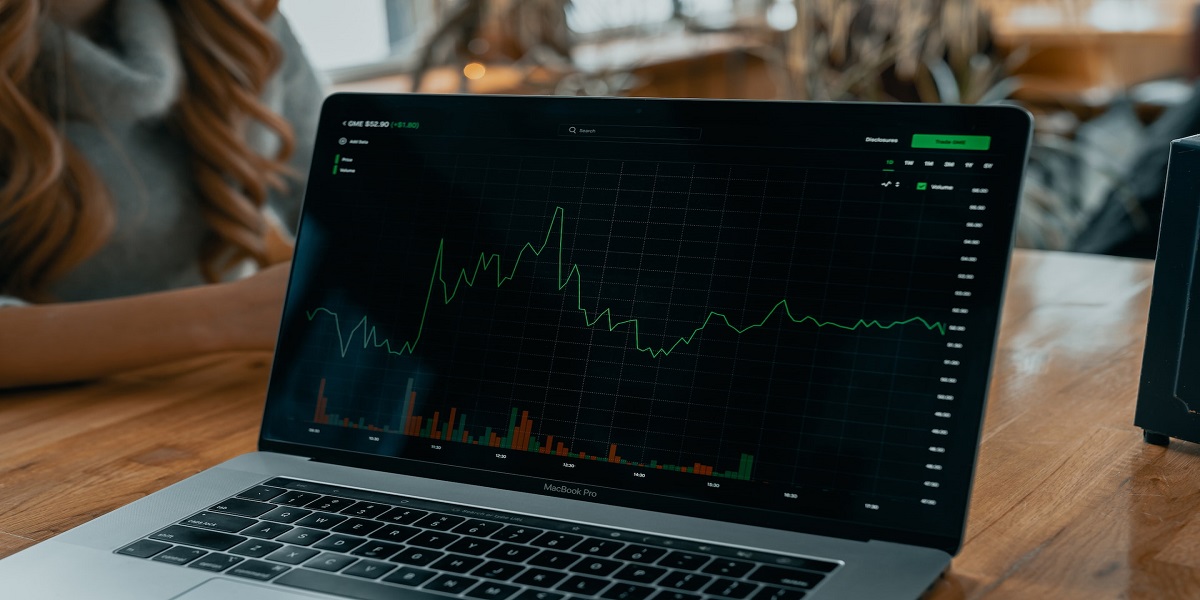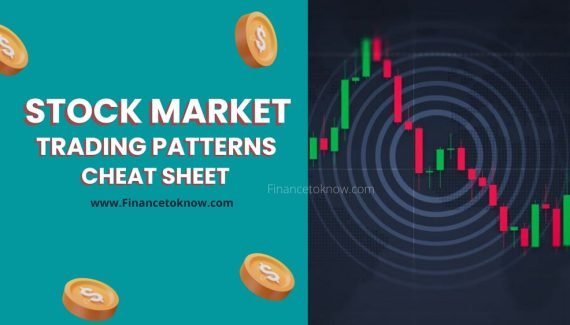Day trading is an investment strategy where you buy and sell securities within the same trading day. Day traders usually trade in liquid shares with low commissions. The goal of day trading is to make small profits on a large number of trades, as opposed to making big profits on a few trades. Day traders typically have high-risk tolerance and can withstand losses that would stop other investors from continuing their day trading activities.

Contents
Tips to Know When Starting Out With Day Trading
Day trading is a risky business to get into, but it can also be lucrative if you know what you’re doing. It’s important to understand the risks involved before getting started. You should also have a plan in place before risking your capital.
This article will give you some tips on how to start day trading with $100, as well as some of the things you need to know about when starting out with day trading. Day trading is a demanding and competitive field, thus it is important to do your research before you start. Here are some guides and tips on how to start day trading with $100, as well as some of the things you need to know about when starting day trading if you are a beginner.
Step by Step Guide on How You Can Start Day Trading With $100
Day trading is a high-risk, high-reward investment strategy. It can be an excellent way to make money in the short term but it’s not for everyone.
➨ Open a brokerage account with an online broker. You can sign up for one of these accounts and fund it by transferring money from your bank account or by using your credit card.
➨ Find the stock that you want to trade on and purchase shares of that stock through your brokerage account.
➨ Monitor the price of the stock and sell when it reaches a predetermined profit level or stop loss point.
Types of Trading Strategies
There are many different trading strategies that can be used to make money in the market. Some of the most popular buy and hold, short selling, and futures & options.
Short Selling:
Short selling is when an investor borrows a security from someone else and then sells it on the market with the goal of purchasing it back at a lower price. The investor makes a profit by the difference between the price they sell it for and what they paid for it. Short selling has risks involved if you sell something too soon, you could end up losing money instead of making any.
Future and Options:
Futures & options are when an investor buys or sells a contract to purchase or sell an asset in the future at a specified price. Futures contracts typically have longer expiration dates than options contracts which means that investors can take advantage of movements in prices over time without having to pay as much up-front capital gains taxes.
Buy and Hold:
Buy & hold is when an investor purchases securities with no intention of selling them. This strategy has been used for decades. It’s simple to execute, but it involves buying and holding stocks without worrying about fluctuating stock prices.
See Also: Trading Patterns Cheat Sheet
Types of Trading Strategies in Stock Market
A trading strategy refers to a set of rules which are followed by traders to select stocks, commodities, or other securities to trade in the market. Most trading strategies are based on technical analysis, also known as charting. There are many types of trading strategies in the stock market. Some of the most common trading strategies are:
Technical Trading Strategies:
Technical traders rely on interpreting specific technical indicators such as moving averages, oscillators, mathematical techniques, and other chart patterns to make trading decisions.
Fundamental Trading Strategies:
Fundamental traders rely on detailed information about a company’s financial condition, Trading strategies are the backbone of stock trading. They help investors to take calculated risks in order to maximize their potential profits. This article discusses the different types of trading strategies and their use cases.
How to Use a Day Trade Calculator to Set Your Stop Loss Points
➨ The first thing you need to do is enter the number of shares that you want to trade in the “Shares” column. You need to enter the trade amount in whole shares. For example, if you want to trade 100 shares, you would enter “100.”
➨ The second thing you need to do is enter the price per share in the “Price” column. The price you enter needs to be in whole dollars. For example, if you want to trade 100 shares of stock currently at $100, you would enter “$100.”
➨ The third thing you need to do is decide how long of a time period your order will stay open. This can be changed from 1 day all the way up to 15 days with no time limit. You can also choose to close your order at any time by clicking the “Close Order” button.
Enter Margin:
➨ You need to enter the “Margin” that you are trading within the “Margin” column. You can use any value you want, but keep in mind that this margin has to be between 1% and 100%.
➨ In the “Type” column, select the type of orders that you are planning to place. You can choose between Market, Limit, or Stop orders.
➨ Click on the blue “Calculate” button at the bottom of your screen and your order will automatically fill at a price that is equal to your current market price plus or minus a certain
Calculate Value:
After you have entered the Margin, you need to calculate what dollar value that corresponds to the Margin by dividing it by 100 and then multiplying it by 1.
For example, if your Margin is $500, you would divide 500 by 100 and then multiply that by 1 to get $5. Likewise, if your Margin is $2,000 then you would divide 2000 by 100 and multiply that by 1 to get $20.
See Also: How to Calculate Equity Dilution for Startups
Why You Can and Should Start Day Trading With $100
Day trading is a great way to make money online. It is also an easy and profitable way to make money. Day trading can be done with a small amount of capital and without any experience. You don’t need to have a lot of money or be an expert trader in order to start day trading.
First, you learn about securities and how they are priced and traded. You then decide on a specific investing strategy to start day trading with $100 at least amount. Then, you trade an initial amount of capital with the goal of increasing it over time. You can then re-invest your profits to increase your capital in order to continue day trading.
See Also: Different Candlesticks and Their Meaning
Top 5 Ways to Protect Your Capital When Starting Day Trading
The following are the top 5 ways to protect your capital when starting day trading:
- Start small and invest wisely.
- Don’t overtrade.
- Keep a trading journal.
- Develop a plan and stick to it.
- Have an emergency fund for emergencies.
Best Trading Tools to Start Day Trading
Trading tools are a category of software that assists in the analysis and trading of stocks. They offer the trader fast, simple and efficient tools which can help them make decisions about their investments. With the fast-paced market changes, it is becoming increasingly difficult for traders to keep up with all the information. Trading tools will help traders stay ahead of the competition by providing them with an edge over other traders.
Trading tools are usually the first step for a beginner trader. They help traders to get used to the market and learn about trading techniques.
There are a number of trading tools that can help traders in their day-to-day trading. The following are some of the best trading tools for Day traders:
1. TradingView:
it is a free, simple, and powerful charting platform that allows traders to create their own custom indicators and share them with other traders. There are a number of trading tools that can help traders in their day-to-day trading. This is one of the most popular trading platforms for novice and intermediate traders
2. Trading Central:
it is a free, user-friendly, and reliable platform that provides traders with everything they need for trading stocks, options, futures, forex, ETFs, and more.
3. Zignals:
This is an advanced algorithmic platform that helps traders make decisions in real time. It is used by professional traders to provide them with insights into market trends and to minimize risk.
4. FXCM Mobile Trader:
This mobile app provides access to all the features on the desktop version as well as additional features such as alerts for price movements and news updates.
5. Bloomberg Terminal:
This terminal allows users to access timely, accurate, and insightful business news, data, and financial information. It is built on a robust and secure platform that delivers insights from more than 380,000 professional clients in 130 countries. Users can also compare the latest updates to market information, with the help of Bloomberg Mobile which has been downloaded over 7 million times.
It is crucial to have a good trading tool in order to succeed in the trading world. Trading tools are necessary for traders because they provide them with the following:
- A platform to trade on.
- A place to find new opportunities and make trades.
- Information that can help them make better decisions.
- The ability to track their trades and see how they are doing.
Final Conclusion
This article covers the essential steps to start day trading: how to get a broker, how to set up an account, and how to start trading for beginners with $100. Day trading is a risky business, but it can be very rewarding if you know what you’re doing. Learn about the market before you trade – Set up your account correctly – Find a broker that suits your needs – Practice with demo accounts before going live – Start with small trades until you feel comfortable – Track your progress and stay disciplined.
There are many different ways to start day trading for beginners. But it all starts with understanding how to read charts and graphs, which you can learn from online courses or books. Once you have a good understanding of the basics, you can start practicing on a demo account before investing your own money in stocks and bonds online or on an actual trading desk at a brokerage firm.
Post You May Like:
- The CCI Indicator in Forex Trading
- Types Of Candlesticks and Their Meaning
- Calculate Equity Dilution for Startups


